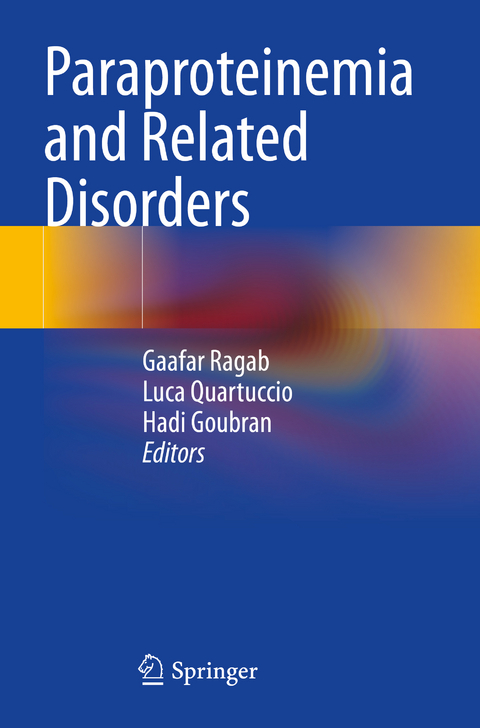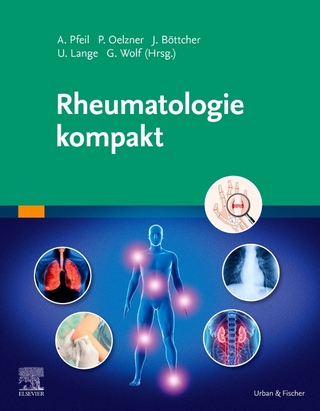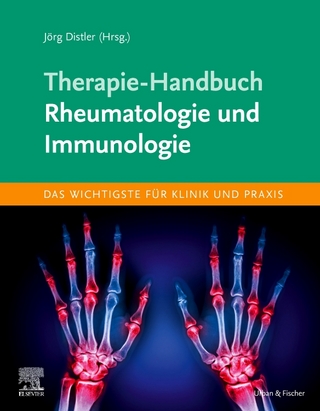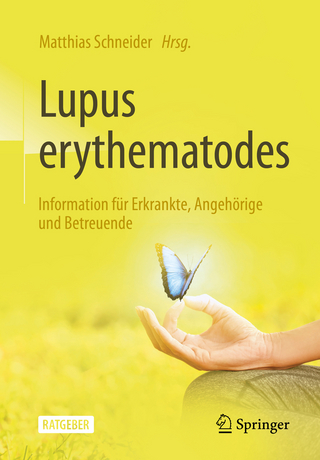
Paraproteinemia and Related Disorders
Springer International Publishing (Verlag)
978-3-031-10133-5 (ISBN)
This book presents paraproteinemia and the highly complex scientific information behind it to clinicians in a way they can understand and, ultimately, apply to their diagnostic and treatment practices. Paraproteinemia or dysproteinemia is characterized by the overproduction of an immunoglobulin by clonal expansion of cells from the B cells lineage which includes the plasma cells. The resultant monoclonal protein can be composed of the entire immunoglobulin or of its components. The identification and categorization of the different representatives of this group of disorders have traveled a long distance, but despite its high prevalence there is surprisingly limited evidence, in some areas, to guide the best clinical practice both at the time of diagnosis and during follow up. This book seeks to fill that gap.
The book is divided into three sections, introductory chapters, disease entities and experimental therapies. The text guides clinicians throughthese diseases and disorders. The group of renal diseases attributed to deposition of monoclonal immunoglobulins or their components are arranged as one disease category in order to simplify the understanding of these complicated diseases in plasma cell dysplasia. In emulation of this practical approach, at a larger scale, the volume editors and chapter authors attempt to encompass the whole spectrum of the paraproteinemias in this text. This will have the dual benefit of offering the audience a panoramic view of this group of disorders and simultaneously keeping them focused on its individual representatives. There have been many recent advances in diagnosis, risk stratifications, and management of many members of this group of diseases and they are explored in depth here.
This is an ideal guide for rheumatologists, hematologists, nephrologists, immunologists, oncologists, and relevant trainees caring for patients with paraproteinemia and related disorders.
lt;p>Gaafar Ragab graduated from the Faculty of Medicine, Cairo University, 1976, where he got his degrees in Internal Medicine: MSc 1980, and PhD, 1985. He served his faculty as a Resident, Assistant Lecturer (1980), Lecturer (1985), Assistant Professor (1990), and Professor (1995) till now. He spent a sabbatical year 1989 at the UAB, USA, in the Department of Clinical Immunology and Rheumatology. He headed the Clinical Immunology and Rheumatology Unit affiliated to the Internal Medicine Department (2010-2013). He was Chief of the Internal Medicine Department's Research Committee (1995-2013). He is Fellow of the American College of Rheumatology (ACR) since 1989. He co-founded the Egyptian Society of Immunology and Rheumatology (EGYSIR) which he headed as its President from 2010 to 2013. He was chosen as President of the Egyptian League Against Rheumatism (ELAR) annual meeting 2013. He is a member of the Advisory Board of the Egyptian Society of Internal Medicine (ESIM) and its journal and served as President of ESIM annual meeting, Cairo, 2014. He is member of the editorial board of the Journal of Advanced Research (JARE). He is currently the Chief Research Officer of New Giza University, Egypt.
Dr. Ragab co-edited "The Microbiome in Rheumatic Diseases and infection" by Springer 2018 and "Precision Anticoagulation Medicine: A Practical Guide" by Springer 2020.
He also authored nine book chapters in in textbooks by international publishers.
He served as a reviewer for many medical journals and publishing firms..
Dr. Ragab received:
- The prize of honor, Cairo University, for Distinguished Achievements in 2019.
- Prof. Dr. Ekram Abdel-Salam 2016 Prize, presented by Cairo University, for best research on Medical genetics. .
He is also member of:
- The International Study Group of Extrahepatic Manifestations Related to Hepatitis C Virus infection (ISGEHCV).
- The Egyptian National Committee for the management of Hepatitis C Virus.
- The autoinflammatory diseases alliance (AIDA).
Luca Quartuccio received his M.D. in 2003 from University of Udine. He completed his clinical fellowship training in Rheumatology at Rheumatology Clinic of Udine in 2007 and his Ph.D. in Clinical Sciences and Technologies in 2011. He is researcher in Rheumatology since 2010 and Associate Professor of Rheumatology since 2019. He focused his investigations on the eziopathogenetic and therapeutic features of different rheumatic diseases, with particular interest on the role of B cells in cryoglobulinemic vasculitis, ANCA-associated vasculitis, large-vessel vasculitis, Sjögren's syndrome, and rheumatoid arthritis. In 2008 he was awarded the Young Researcher Award by the Italian Society of Rheumatology (S.I.R.) for his contribution in the field of the predictors of response to rituximab in rheumatoid arthritis, and in 2014 he received the EULAR abstract award for his contribution in the field of the treatment of cryoglobulinemic vasculitis.
Hadi Goubran obtained his M.B.B.Ch. from Cairo University, Egypt and got a Master's degree [M.Sc.] followed by an (M.D) Ph.D. in internal medicine from the same university. Trained as a hematologist at the St. Thomas hospital in the UK and was elected Fellow of the Royal College of Physicians of Edinburgh and hosted its exam in Egypt. Completed the American exams and became a member then a Fellow of the American College of physicians.
Worked as a professor of hematology at Cairo University, Egypt then moved to Canada in 2010
Joined the Saskatoon cancer centre as a hematologist and the college of medicine of the University of Saskatchewan as a clinical professor and the College of Graduate Studies and Post-doctoral research as an Adjunct Professor and as a member of the University of Saskatchewan Ethical Review Board in 2016.
Regional Adviser f
The phenomenon of Paraproteinemia.- B Cell in Health and Disease.- Immunoglobulins, structure and function.- The Bone marrow as a hotbed for Plasma Cell activation.- Animal Models in Monoclonal Immunoglobulin Related Diseases.- An Approach to The Diagnosis of Paraproteinemia.- Amyloidosis: Pathogenesis, types and diagnosis.- Amyloidosis: Clinical Manifestations and Treatment.- Primary Light Chain (AL) Amyloidosis.- Monoclonal Immunoglobulin Deposition Disease.- Multiple Myeloma.- Monoclonal Gammopathy of Undetermined Significance (MGUS) & Highlight on Monoclonal Gammopathy of Neurological Significance (MGNS).- Monoclonal Gammopathy of Renal Significance: An Insight.- Waldenström Macroglobulinemia.- IgG4 Related Disease Overview: Pathology, Clinical picture and Treatment.- Type I cryoglobulinemia.- Paraproteinemias associated with Autoimmune Diseases.- Infections and Paraproteinemia.- Paraproteinemia In Autoinflammatory Diseases.- Paraproteins associated with malignancy.- Monoclonal Gammopathies with Miscellaneous Associations.- Novel and Experimental Clone-directed Therapies.- Non-Pharmacological Management of Paraproteinemia.
| Erscheinungsdatum | 16.11.2023 |
|---|---|
| Zusatzinfo | XVI, 397 p. 42 illus., 40 illus. in color. |
| Verlagsort | Cham |
| Sprache | englisch |
| Maße | 155 x 235 mm |
| Gewicht | 640 g |
| Themenwelt | Medizinische Fachgebiete ► Innere Medizin ► Rheumatologie |
| Medizin / Pharmazie ► Medizinische Fachgebiete ► Onkologie | |
| Studium ► Querschnittsbereiche ► Infektiologie / Immunologie | |
| Schlagworte | autoinflammatory • immunology • infectious disease • myeloma • Oncology • paraproteinemia |
| ISBN-10 | 3-031-10133-2 / 3031101332 |
| ISBN-13 | 978-3-031-10133-5 / 9783031101335 |
| Zustand | Neuware |
| Informationen gemäß Produktsicherheitsverordnung (GPSR) | |
| Haben Sie eine Frage zum Produkt? |
aus dem Bereich


